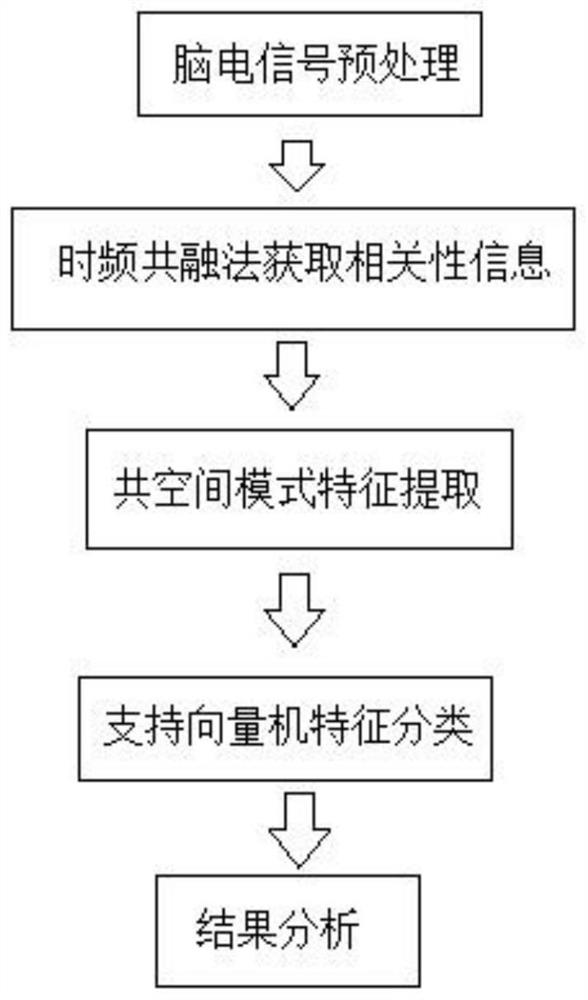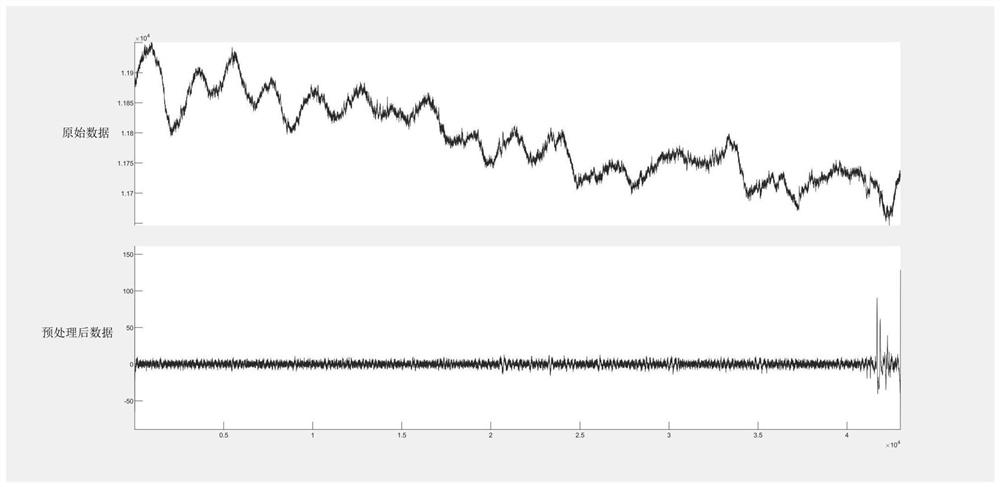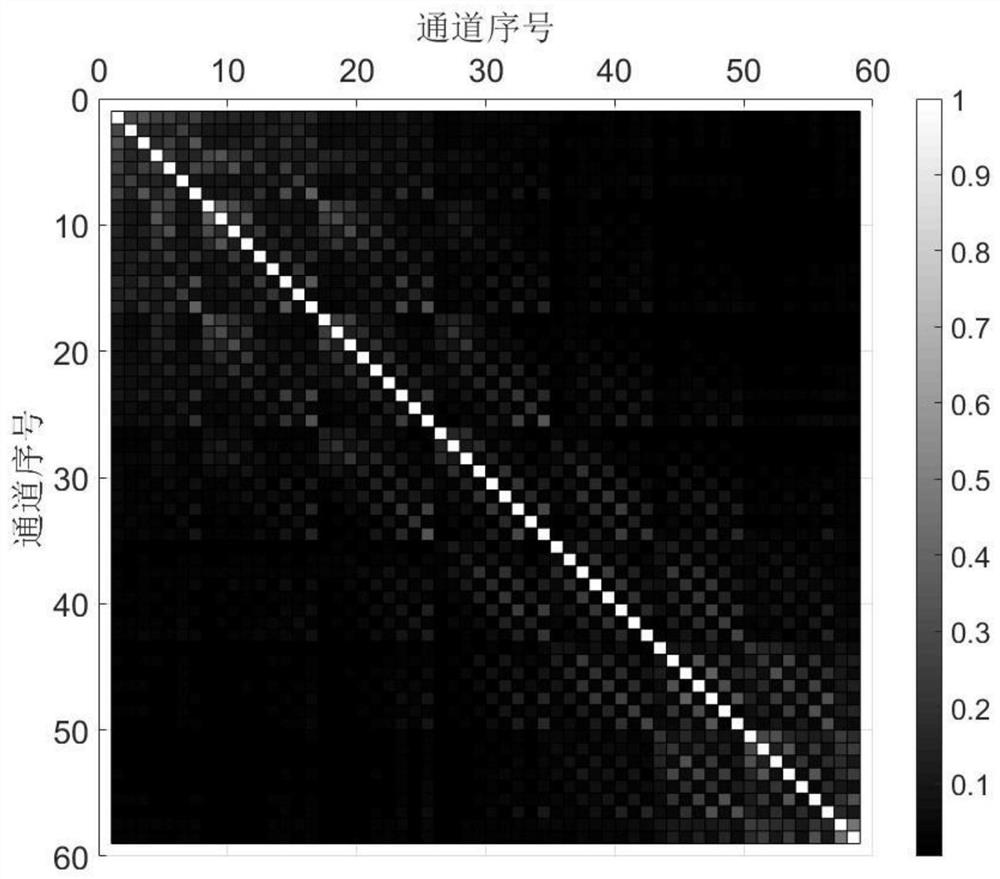Multichannel electroencephalogram signal channel selection method based on time-frequency co-melting
An EEG signal and channel selection technology, which is applied in medical science, sensors, diagnostic recording/measurement, etc., can solve problems such as the inability to flexibly select the brain-computer interface channel and the inability of a single channel to provide sufficient information.
- Summary
- Abstract
- Description
- Claims
- Application Information
AI Technical Summary
Problems solved by technology
Method used
Image
Examples
Embodiment 1
[0072] In this example, refer to figure 1 , a multi-channel EEG signal channel selection method based on time-frequency fusion, the operation steps are as follows:
[0073] a. EEG signal preprocessing:
[0074] Reduce the sampling frequency, use wavelet transform to correct baseline drift, band-pass filter, and independent component analysis to remove oculograph signal interference;
[0075] b. Use the time-frequency fusion method to obtain correlation information between channels;
[0076] c. Feature extraction using co-space patterns;
[0077] d. Use the support vector machine to train the classification model, input the test set into the classification model, and obtain the classification accuracy data;
[0078] e. Perform result analysis, and obtain classification accuracy results of various channel selection methods according to the result information.
[0079] The method of this embodiment solves the difficulty that a single channel cannot provide enough information,...
Embodiment 2
[0081] This embodiment is basically the same as Embodiment 1, especially in that:
[0082] In this example, see figure 1 , a multi-channel EEG signal channel selection method based on time-frequency fusion, the operation steps are as follows:
[0083] a. EEG signal preprocessing:
[0084] Preprocess the collected EEG data; resample and down-frequency all the collected EEG data as needed; then perform baseline drift correction, and select the filter passband for filtering according to the research content; use independent component analysis to convert the EEG Signal removal to prevent it from interfering with experimental results;
[0085] b. Time-frequency fusion method to obtain correlation information
[0086] Integrate the time and frequency components of the EEG signal; use the time-frequency analysis method based on wavelet transform; perform wavelet transform on the preprocessed data to obtain the time-frequency power information of each channel and each frequency, an...
Embodiment 3
[0134] This embodiment is basically the same as the above-mentioned embodiment, and the special features are:
[0135] In this example, see figure 1 , a channel selection method for multi-channel EEG signals based on the time-frequency fusion method, the operation steps are as follows:
[0136] a. EEG signal preprocessing
[0137] According to the content of the above-mentioned invention content a, the collected motor imagery EEG data is preprocessed; the collected EEG data is resampled and down-converted to 250Hz; the baseline drift is corrected by wavelet transform, and a Butterworth-based The second-order IIR filter performs band-pass filtering with a passband of 8-30 Hz; performs 8-30 Hz band-pass filtering to retain the motor imagery signal characteristics contained in the α wave and β wave frequency bands, and remove most of the myoelectric noise interference; Oculoelectric signals also exist in the 8-30Hz frequency band as noise, so independent component analysis is u...
PUM
 Login to View More
Login to View More Abstract
Description
Claims
Application Information
 Login to View More
Login to View More - R&D
- Intellectual Property
- Life Sciences
- Materials
- Tech Scout
- Unparalleled Data Quality
- Higher Quality Content
- 60% Fewer Hallucinations
Browse by: Latest US Patents, China's latest patents, Technical Efficacy Thesaurus, Application Domain, Technology Topic, Popular Technical Reports.
© 2025 PatSnap. All rights reserved.Legal|Privacy policy|Modern Slavery Act Transparency Statement|Sitemap|About US| Contact US: help@patsnap.com



